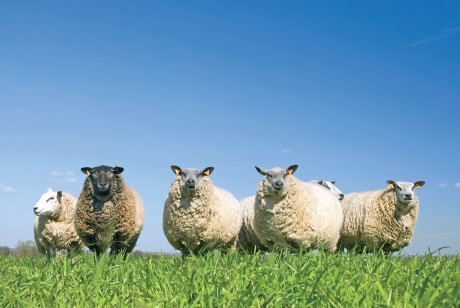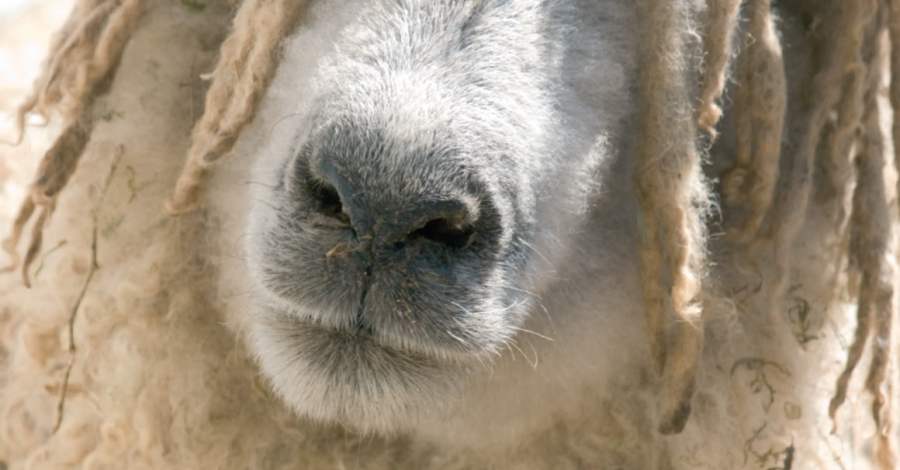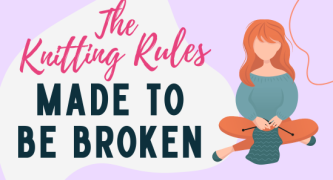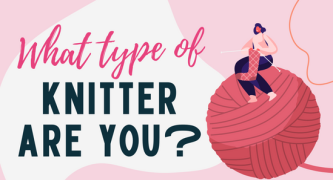With this year’s spring lambs making their way into the world, Adrienne Chandler learns all about wool and discovers why Britain is the best place for this fabulous fibre.
Sheep have had a major role in the British way of life for thousands of years and are the original knitter’s best friend. Centuries before we had access to silk, alpaca and cotton yarn, wool was being spun for use in woven fabrics and handknitted items, and exported around the globe as part of a major industry. It is a fabulous renewable resource that has many uses. We take a closer look at our four-legged friends and talk to those in the know to find out what it is that makes British wool such a fantastic fibre.
A whole lot of history
Although the UK has the most extensive variety of sheep breeds in the world, sheep aren’t actually native to Britain. The first sheep were domesticated in Asia then introduced to the country in around 4000BC by Neolithic settlers. Further breeds were later introduced by the Romans and afterwards the Danes, and cross-breeding has led to the diversity we have today. Early sheep were not sheared but had a yearly moult which was collected and used for clothing and within the home, but they have since developed to produce the continuously growing coat that is found on modern sheep.

Scaling the heights
If you were to closely examine a single wool fibre under a microscope you’d see little scales just like on human hairs (think of the shampoo adverts!) and these affect the texture of the wool. The more scales there are, the softer and finer the yarn will be. For example, merino has hundreds of tiny scales and is one of the finest wools available. In contrast, larger scales create a smoother surface which reflects light and gives the yarn a lovely sheen.
David Grey from Cornwall-based yarn shop Iriss of Penzance told us more about the science behind this fascinating fibre. “There are various grades of wool,” he explained. “The diameter of the fibre in microns is what gives it the fineness but the crimp (natural curl) of the wool affects this too. Wool from a very curly sheep feels softer because it spins up into a loftier, bulkier yarn than a straight fibre. Wool will always keep its crimp no matter what you do with it. It’s one of the best technical fibres there is; nothing manmade can beat it.”
Going strong
Wool is also a naturally durable fibre. Consider all the processes it goes through to become yarn: shearing, vigorous washing and scouring, separating, carding and combing the fibres to make them smooth and manageable, spinning, and finally, winding. That’s before you even start knitting! A single fibre can be repeatedly bent at least 20,000 times and still won’t break – now that’s impressive!
“The strength depends on the length of the individual fibre and also on how well kept the sheep are,” revealed David. “Happy sheep give very fine wool. If they’re mistreated or moved around in lorries a lot, you’re likely to get weak parts. The best fibre always comes from happy sheep. The way it’s spun also affects the strength of the finished yarn. A worsted spun yarn will always be stronger than a woollen spun one because the fibres are laid more neatly and closely together.”
Top tip: Worsted spun yarns contain fibres that are carded and combed, then neatly aligned before spinning which creates a smoother and tighter yarn. Woollen spun yarn uses fibres that are more randomly placed and are of different lengths. When spun they give a yarn that is loftier but not as strong.

Whether the weather
Neolithic man often used whole fleeces for their warmth and waterproofing properties and spun wool retains these attributes. It absorbs moisture fantastically well and when the water droplets meet the fibres, a chemical process takes place which releases heat, making it perfect for staying snug.
With warmer days drawing near you may well assume that wool is no longer an option, but that couldn’t be further from the truth. It has brilliant thermoregulating properties which means it is warm in the winter but also keeps you relatively cool in the summer because it draws moisture, including perspiration, away from the skin. It is also well ventilated which enables your skin to breathe through the fabric. Wool combines really well with other fibres, so it can be mixed with cotton or silk which can add drape, sheen or length.
National Pride
British wool has been exported around the globe for centuries and has retained its reputation for being of a very high quality. Iriss of Penzance has been promoting the use of homegrown wool for many years and owner David Grey explains why our wool is so good. “It’s largely to do with climate,” he said. “We get a lot of rain and we have a lot of grass. Harsh countries will have very fine wool because when it’s cold the fleece has to grow much finer to keep the animals warm, but if there isn’t a continuous supply of grass then the quality of that wool may suffer. Here we have the best of everything, the wet, the grass and the sunshine, which is probably the main reason why Britain has become the best place for wool.”
To learn more about British wool and to find out what else Iriss of Penzance has to offer, call 01736 366568 or visit www.iriss.co.uk




_333_180_c1.png)





 Baby
Baby
 Toys
Toys
 Garments
Garments
 Crochet
Crochet
 Homewares
Homewares
 Dolls
Dolls









Share